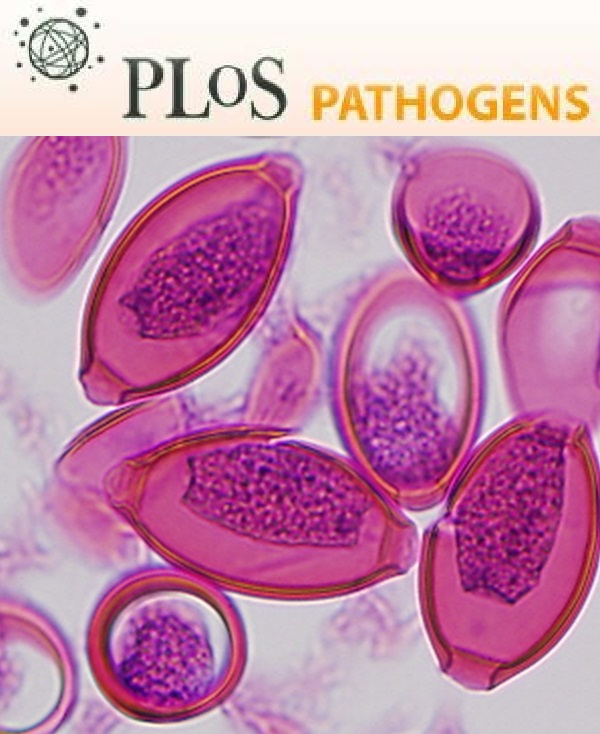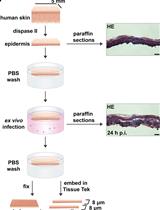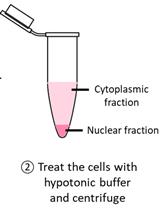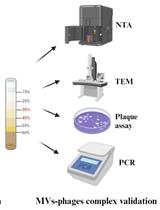- EN - English
- CN - 中文
Membrane Flotation Assay
膜漂浮分析
发布: 2015年04月05日第5卷第7期 DOI: 10.21769/BioProtoc.1435 浏览次数: 14164
评审: Fanglian He
Abstract
Many postitive-stranded RNA viruses, such as Hepatitis C virus (HCV), highjack cellular membranes, including the Golgi, ER, mitchondria, lipid droplets, and utilize them for replication of their RNA genome or assembly of new virions. By investigating how viral proteins associate with cellular membranes we will better understand the roles of cellular membranes in the viral life cycle. Our lab has focused specifically on the role of lipid droplets and lipid-rich membranes in the life cycle of HCV. To analyze the role of lipid-rich membranes in HCV RNA replication, we utilized a membrane flotation assay based on an 10-20-30% iodixanol density gradient developed by Yeaman et al. (2001). This gradient results in a linear increase in density over almost the entire length of the gradient, and membrane particles are separated in the gradient based on their buoyant characteristics. To preserve membranes in the lysate, cells are broken mechanically in a buffer lacking detergent. The cell lysate is loaded on the bottom of the gradient, overlaid with the gradient, and membranes float up as the iodixanol gradient self-generates. The lipid content of membranes and the concentration of associated proteins will determine the separation of different membranes within the gradient. After centrifugation, fractions can be sampled from the top of the gradient and analyzed using standard SDS-PAGE and western blot analysis for proteins of interest.
Materials and Reagents
- Huh7.5 cells
- Huh7.5 cells containing replicating HCV Replicon RNA (= Replicon Cells) (Vogt et al., 2013)
- Dulbecco’s Modified Eagle’s Medium (with 4.5 g/L glucose, L-glutamine & Sodium pyruvate) (DMEM) (Corning Cellgro, catalog number: 10-013-CV )
- Fetal Bovine Serum (FBS) (Benchmark, catalog number: 100-106 )
- Penicillin/Streptomicyn Solution 100x (Pen/Strep) (Corning Cellgro, catalog number: 30-002-Cl )
- L-Glutamine (Corning Cellgro, catalog number: 25-005-CI )
- G418 sulfate (Corning Cellgro, catalog number: 25-052-CI )
- Dulbecco’s Phosphate Buffered Saline without Ca2+ and Mg2+ (PBS) (Corning Cellgro, catalog number: 21-031-CV )
- Trypsin/EDTA (Corning Cellgro, catalog number: 25-052-CI)
- Protease inhibitor cocktail (Sigma-Aldrich, catalog number: P8340 ) (use as 1:100 dilution)
- Trypan Blue Stain (Gibco, catalog number: 15250-061 )
- BioRad Protein Assay (Bio-Rad Laboratories, catalog number: 500-0006 )
- Brilliant Blue G-250 (Thermo Fisher Scientific, catalog number: 100-25 )
- Iodixanol (60%) (Sigma-Aldrich, catalog number: D1566-250ML ) (kept at 4 °C for use in the experiment )
- PBS/Sucrose (see Recipes)
- 20% iodixanol (see Recipes)
- 10% iodixanol (see Recipes)
- 2x Laemmli buffer (see Recipes)
Equipment
- Ultra clear centrifuge tubes (Beckman Coulter, catalog number: 344059 )
- 37 °C 5% CO2 cell culture incubator
- P1000 pipette
- Microscope
- Hematocytometer
- Tight fitting dounce homogenizer (7 ml) (Wheaton, catalog number: 357542 )
- Centrifuge (Beckman Coulter, model: Allegra 6R )
- Spectrophotometer
- Ultracentrifuge (Beckman Coulter, model: Optima L-80 XP with SW41T rotor)
- Protein electrophoresis apparatus
- Western blot apparatus
Procedure
文章信息
版权信息
© 2015 The Authors; exclusive licensee Bio-protocol LLC.
如何引用
Vogt, D. A. and Ott, M. (2015). Membrane Flotation Assay. Bio-protocol 5(7): e1435. DOI: 10.21769/BioProtoc.1435.
分类
微生物学 > 微生物-宿主相互作用 > 离体模型
微生物学 > 微生物细胞生物学 > 细胞器分离
细胞生物学 > 细胞器分离 > 分级分离
您对这篇实验方法有问题吗?
在此处发布您的问题,我们将邀请本文作者来回答。同时,我们会将您的问题发布到Bio-protocol Exchange,以便寻求社区成员的帮助。
Share
Bluesky
X
Copy link












